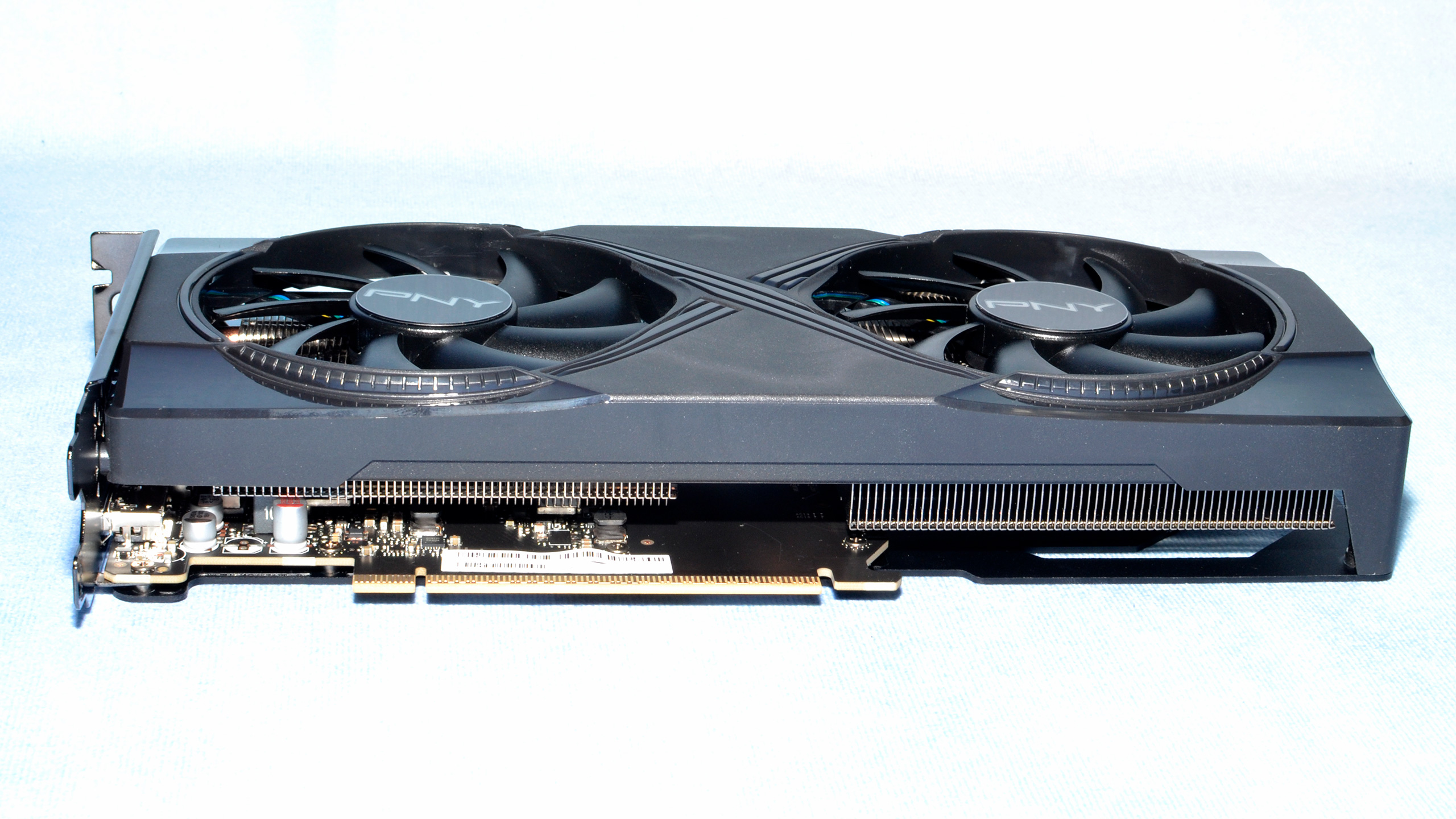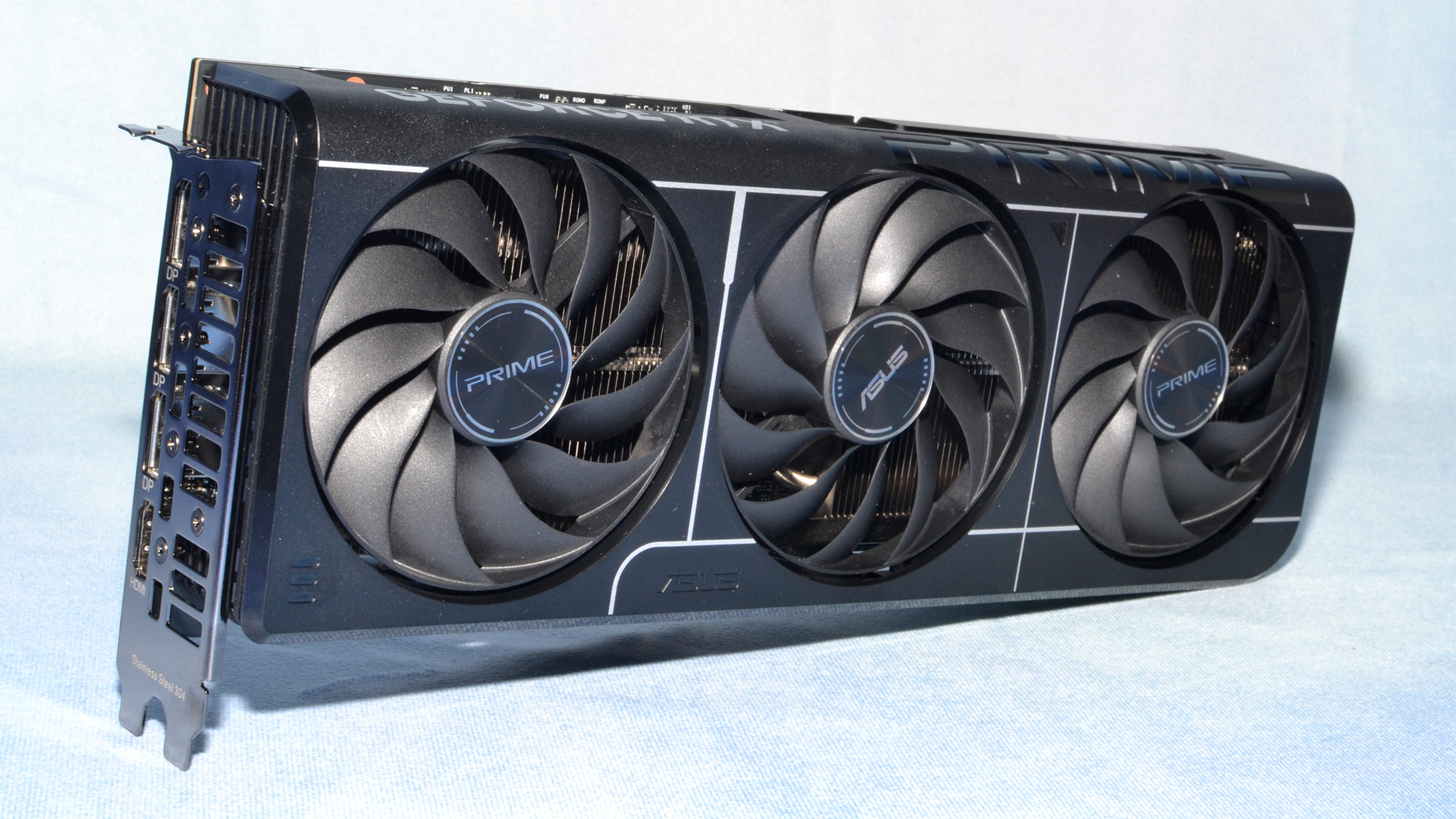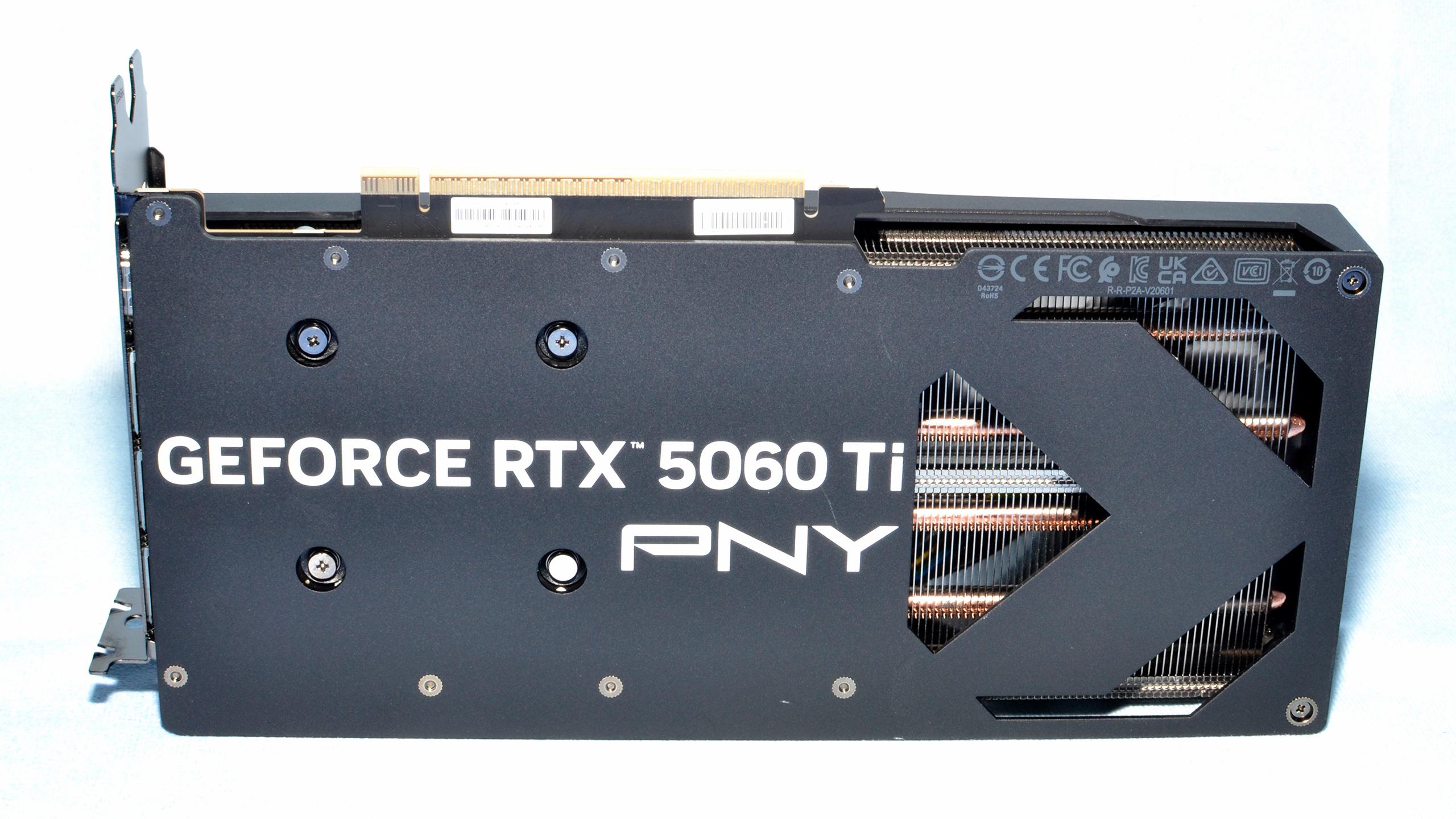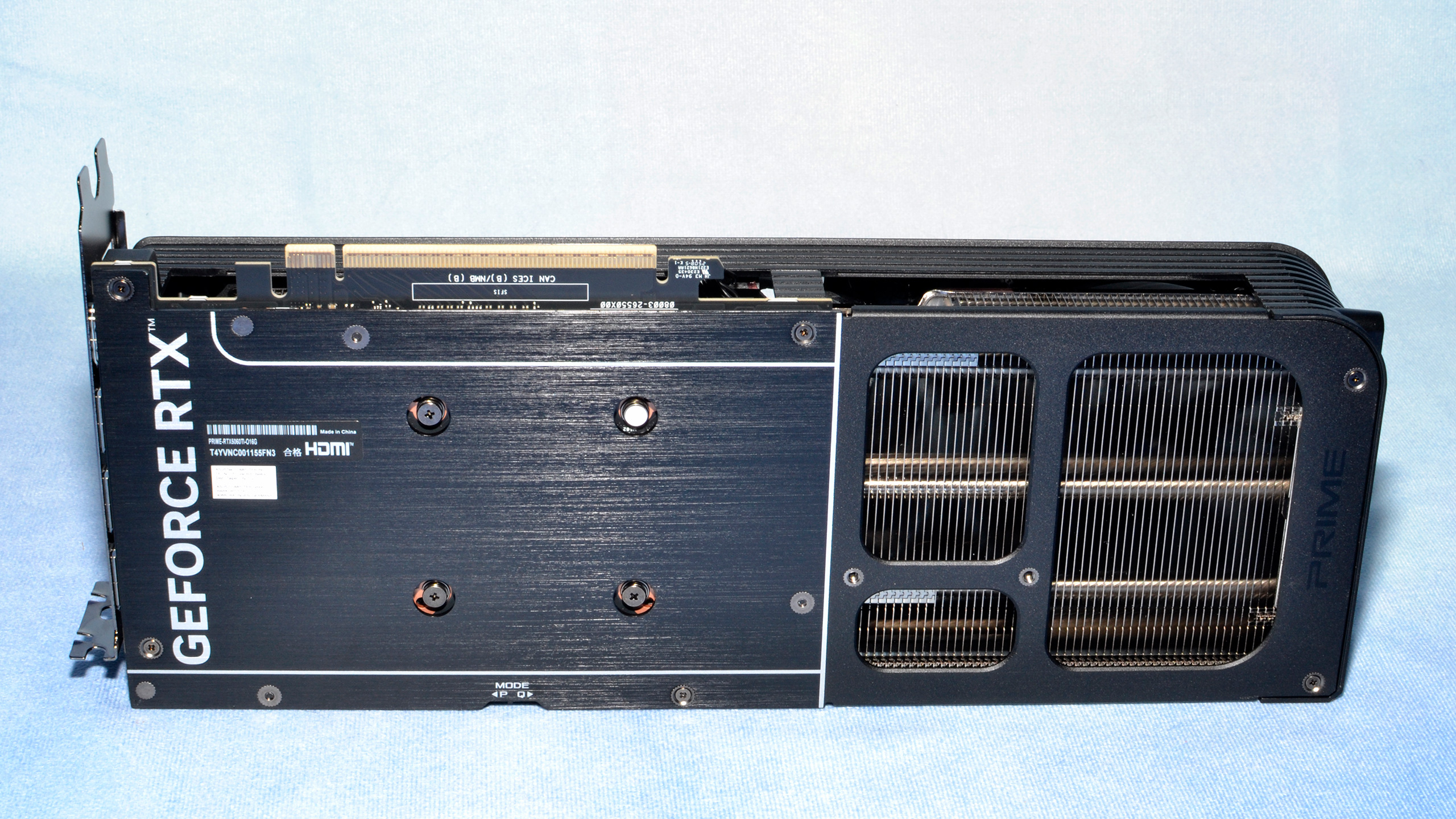Why you can trust Tom's Hardware
Nvidia GeForce RTX 5060 Ti 16GB: Great at MSRP, but retail prices could be much higher
Nvidia's RTX 5060 Ti 16GB delivers a solid combination of performance for the suggested $429 base MSRP. However, as we've seen with every other GPU launch of the past five months, retail prices can be much higher. It's impossible to separate performance from pricing when looking at the overall value of a GPU, and the only thing concrete that we can point to are the MSRPs. Except those can run the gamut from being at least moderately accurate to being completely nonsense.
Where will the RTX 5060 Ti 16GB actually land? We suspect it will trend closer to $500 in the near term, but supply will have a lot to say about that. We've seen the RTX 5070 sell for $550–$600 over the past few weeks, and it's substantially faster than the 5060 Ti 16GB — about 30% faster overall. If we put $600 down as the nominal price for the 5070, then the 5060 Ti 16GB needs to stay well below $500 to offer a similar value. But both GPUs could end up at much higher prices, so you'll just need to see what's available when you're ready to buy.
When the 4060 Ti 16GB came out a month after the 8GB variant, it felt severely underwhelming. Neither version was really designed to handle 4K gaming, but that was the only place where we measured a significant difference in performance. Two years later, things haven't changed too much, but the reduced $50 price gap (on paper at least) between the 5060 Ti 8GB and 16GB makes the 16GB a far easier recommendation. In fact, we'll go so far as to question why Nvidia even felt the need to create an 8GB version.
Yes, 8GB will be cheaper, and it will also be more limited due to the lack of VRAM. There are games (Indiana Jones and the Great Circle) where you can't even try to run ultra settings on an 8GB card. That's an Nvidia promoted game that simply crashes to desktop with a video memory error when you try higher settings on the 4060 and 4060 Ti 8GB GPUs, along with a bunch of other previous generation RTX cards.
The real market for the 5060 Ti 8GB likely isn't the DIY or gamer crowds. Instead, it will probably find its way into prebuilt PCs, where the big OEMs want the highest model number possible at the lowest price. Shaving $25 off the bill of materials for a $1,200 desktop by using an 8GB 5060 Ti instead of the 16GB model? We'll probably see a lot of that. We'll be looking to acquire and test an RTX 5060 Ti 8GB as soon as possible to show exactly how that will affect gaming in the near future.
The good news with the 16GB card is that memory bandwidth has improved thanks to GDDR7, so that it's not likely to hit VRAM capacity or bandwidth limitations. 56% more bandwidth than the 4060 Ti is a sizeable improvement. The fact that most games only show about 15% higher performance indicates that GPU compute is the limiting factor more than bandwidth, however.
We also wish Nvidia has simply opted for an in-between solution. It's using 24Gb (3GB) GDDR7 chips on the mobile RTX 5090, as well as the RTX Pro 6000 Blackwell server, workstation, and data center variants. Obviously those chips exist and appear to work just fine. How much would it have cost to use four 3GB chips on one side of the PCB, rather than putting eight 2GB chips on both sides of the PCB in clamshell mode? We can't help but think the 16GB configuration costs more, so perhaps there just isn't enough 3GB chip supply right now to cover all the products that would benefit.
And so we end up with the weird bifurcation where you have either too little VRAM in the case of the 8GB model, or more VRAM that the GPU really needs in the case of the 16GB card. But we'd rather have too much than not enough. If you're interested in buying the RTX 5060 Ti, we would strongly advise potential customers to get the 16GB model this round. There are simply too many 'edge' cases where 8GB isn't enough, and they're becoming increasingly common. $50 extra is money well spent.

But as we've already said numerous times, the price difference could very easily end up being more than $50. And factors like on again/off again tariffs, limited supply, product demand, and more could push the 16GB card to the point where maybe it won't be the better choice. The RTX 5070 still serves as a ceiling on how much more the 5060 Ti 16GB can realistically cost before it's "too much," but with 5070 cards often listed for $700 or more, there's a lot of wiggle room right now.
Price and availability will be the key determiners of how good the 5060 Ti 16GB looks, and that will also vary by market. Europe and Asia might end up with a much different GPU landscape than the U.S. as far as graphics card values go.
What we can say is that the 5060 Ti 16GB isn't a massive generational improvement, but it is an improvement. It's also supposed to be less expensive than its 4060 Ti 16GB predecessor. Those are both good things, and stuff like neural rendering, DLSS 4, and Multi Frame Generation are merely extras that you can use as you see fit. Now we just wait to see what today's launch looks like, how quickly the 5060 Ti models sell out, and how high prices go.
Our score of 4-stars represents a "best guess" on what the 5060 Ti 16GB will look like in the current GPU market. Obviously, prices for all graphics cards, new and used, are all over the map. If the RTX 5060 Ti 16GB costs 50% more than the MSRP, and other cards don't show a similar markup, that makes it a worse value and a less desirable card and it would deserve a lower score. We can't predict where things will go, so pay more attention to the performance and real-world pricing than the single score that we've assigned, because uncontrollable factors play into the overall package.
- MORE: Best Graphics Cards
- MORE: GPU Benchmarks and Hierarchy
- MORE: All Graphics Content
Get Tom's Hardware's best news and in-depth reviews, straight to your inbox.
Current page: Nvidia GeForce RTX 5060 Ti 16GB: Great at MSRP, but retail prices could be much higher
Prev Page Nvidia GeForce RTX 5060 Ti 16GB Power, Clocks, Temps, and Noise
Jarred Walton is a senior editor at Tom's Hardware focusing on everything GPU. He has been working as a tech journalist since 2004, writing for AnandTech, Maximum PC, and PC Gamer. From the first S3 Virge '3D decelerators' to today's GPUs, Jarred keeps up with all the latest graphics trends and is the one to ask about game performance.
-
Amdlova I want to say that is a nice card... But with 180w TBP for those numbers it's a waste of sand.Reply
nvidia is afraid to bench the 8GB cards... Just buy an AMD card and be happy -
palladin9479 Once the 8GB model comes out would be nice to see a quick article focusing just on 4060 and 5060 8 / 16 finding the settings where 8GB stops being capable. The 1080p medium graph shows that the 8GB cards work fine at that level, but then the next step is "ultra" which usually has ridiculous texture sizes. Would be nice to see 1080, 1440, 2160 "high" or "very high", one step down from ultra and see how well those cards do. Someone buying a xx60 class card isn't going to have a good experience playing at 4K "ultra".Reply
Amdlova said:nvidia is afraid to bench the 8GB cards... Just buy an AMD card and be happy
It's right in the article just compare both versions of the 4060. Each test has a graph at the very end using 1080p medium and you can see the 8GB model does very well there. They didn't have time to do additional testing with "high" or "very high" intermediate levels and ultra has ridiculously large texture sizes that start to hurt 8GB cards. I see them as doing well on 1080/1440 with "high" settings, basically a budget gamer using whatever they can get their hands on. We laugh but I know a ton of guys like that at work, have wives and kids are upgrade a piece at a time. -
JarredWaltonGPU Reply
In our test suite, 1080p ultra is still playable in all 18 games on an 8GB card, or at least an 8GB Nvidia card. (The RX 7600 may have some issues in one or two games.) There are however games like Indiana Jones where 8GB represent a real limit to the settings you can use. The TLDR is that it varies by game, but 1080p/1440p "high" should be fine on an 8GB card. I'd still pay the extra $50 if I were in the market for this sort of GPU (assuming it's only a $50 difference, naturally).palladin9479 said:Once the 8GB model comes out would be nice to see a quick article focusing just on 4060 and 5060 8 / 16 finding the settings where 8GB stops being capable. The 1080p medium graph shows that the 8GB cards work fine at that level, but then the next step is "ultra" which usually has ridiculous texture sizes. Would be nice to see 1080, 1440, 2160 "high" or "very high", one step down from ultra and see how well those cards do. Someone buying a xx60 class card isn't going to have a good experience playing at 4K "ultra". -
cknobman So the new gen 60 TI class card cant even come close to matching the last gen vanilla 70 class card?Reply
Seems like a really bad "upgrade" to me.
Definitely a 3 star, not 4, kind of score.
Also if you have been keeping up with the news Nvidia is purposely not letting 8gb cards get reviewed.
They told partners they are not allowed to sample those cards out for review.
The only way you will get 8gb card reviews is AFTER release and when they are purchased at retail by reviewers.
The only reason this is happening is because Nvidia knows the 8gb cards are crap. Making reviews wait until after retail availability ensures that at least the first batch will fly off shelves regardless.
Nvidia is a terrible company. -
palladin9479 ReplyJarredWaltonGPU said:In our test suite, 1080p ultra is still playable in all 18 games on an 8GB card, or at least an 8GB Nvidia card. (The RX 7600 may have some issues in one or two games.) There are however games like Indiana Jones where 8GB represent a real limit to the settings you can use. The TLDR is that it varies by game, but 1080p/1440p "high" should be fine on an 8GB card. I'd still pay the extra $50 if I were in the market for this sort of GPU (assuming it's only a $50 difference, naturally).
Yeah it's all price dependent $50 USD to go from 8 to 16 is a no brainer, but there is a large market for older stuff including used cards (see your other article). Steam survey has 1080p being 56.40% of the market with 1440p being 19.06%, that's 3/4ths of the gaming market between those two resolutions. 8GB VRAM was 35.52% with 12GB at 18.42 and 6GB at 11.93%. Over 60% of the market was 8GB or less and only ~7.2% had 16GB or more. We've obviously got a center mass of sorts around 1080/1440 with 8GB, kind of the definition of "mainstream" and why I'm interested in that bracket despite youtubers claiming that a 8GB card can't run solitaire in 2025.
It's not sexy but it's the vast majority of the consumer gaming market and with economies being what they are are prices going up, that market segment wants to squeeze as much out of it's limited disposable income as possible.
I mean RX 7600 8GB at $290 USD. Dirt cheap by todays standards. The poster child of "1080p medium/high".
https://www.amazon.com/PowerColor-Hellhound-Radeon-Gaming-Graphics/dp/B0C48LM7NN/ -
Alvar "Miles" Udell I'd say this is a 3 star card.Reply
Should have knocked a star off just because the 8gb model exists to up charge for the 16gb model.
The 19% rasterization performance improvement deserves another deduction because it is a terrible Gen over Gen increase, same across the 5000 series stack. Yes it's just a refinement generation, but even for MSRP you're talking over $400 for 1080p75/1440p60 in 2025 and not even matching last gens 4070, which will be made all the worse once custom editions tack on their upwards of $100 premiums.
Granted this is an upper entry level gaming card, a PC built around it is still very much more expensive than a console, and needs to have performance that justifies it. -
DRagor I have checked my local market. All 8Gb cards were sold out while 16Gb were still in stock, some even at MSRP (although many had price close to 5070 lol). For me it is clearly foul play by NVIDIA: let the ppl watch 16Gb version reviews and then go buy cheaper 8Gb models coe they're cheapo and ppl don't understand difference.Reply -
Gururu B580s are still in stock... So many similar cards tested from the big two, why not toss in the ARC B580 for buyer options? We know it sits in the 7600/4060 class or higher.Reply -
Roland Of Gilead Reply
Totally agree with you. I was kinda hoping the 5060ti would have a similar bump like the 3060ti did, being faster than a 2080 Super. I kinda figured from the reviews of the new gen 50xx models that it wouldn't really hit the point. But to do so, so unspectacularly is not good.cknobman said:So the new gen 60 TI class card cant even come close to matching the last gen vanilla 70 class card?
As pointed out, the 5060ti 16gb is the only choice for only $50 more. It's a no brainer.
I'm quite happy now with my 4070 Super, and have no FOMO. Well, maybe apart from the 9070XT, which I think is hands down the award winner in the last roll out of GPU's. Defo the stand out card right now, if they are available. -
ThereAndBackAgain Reply
Honestly, if people don't understand the difference between 8 GB VRAM and 16 GB VRAM, they shouldn't be spending $400+ on a GPU in the first place. But it's kind of hard to imagine someone knowledgeable enough to build their own PC not comprehending VRAM. The people who bought those cards most likely knew exactly what they were getting.DRagor said:I have checked my local market. All 8Gb cards were sold out while 16Gb were still in stock, some even at MSRP (although many had price close to 5070 lol). For me it is clearly foul play by NVIDIA: let the ppl watch 16Gb version reviews and then go buy cheaper 8Gb models coe they're cheapo and ppl don't understand difference.


